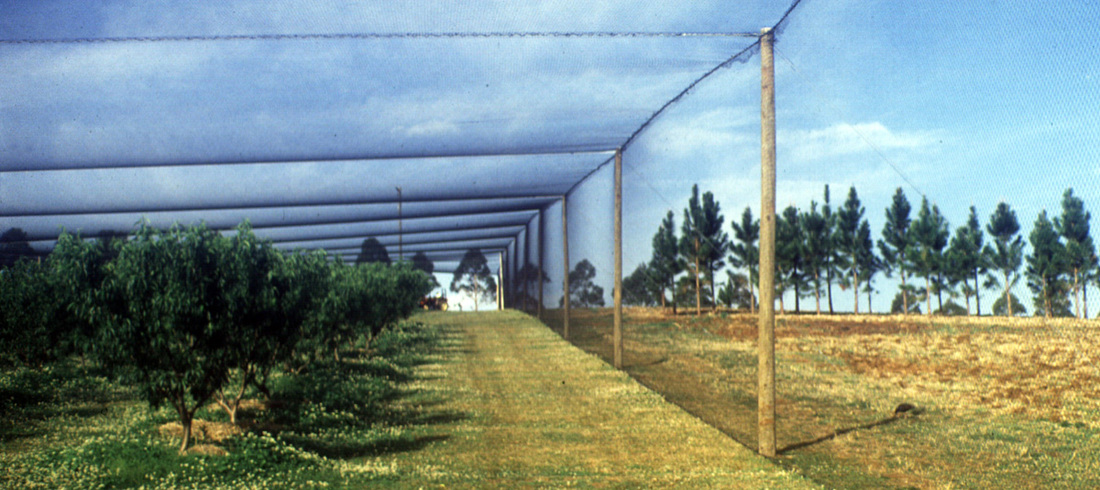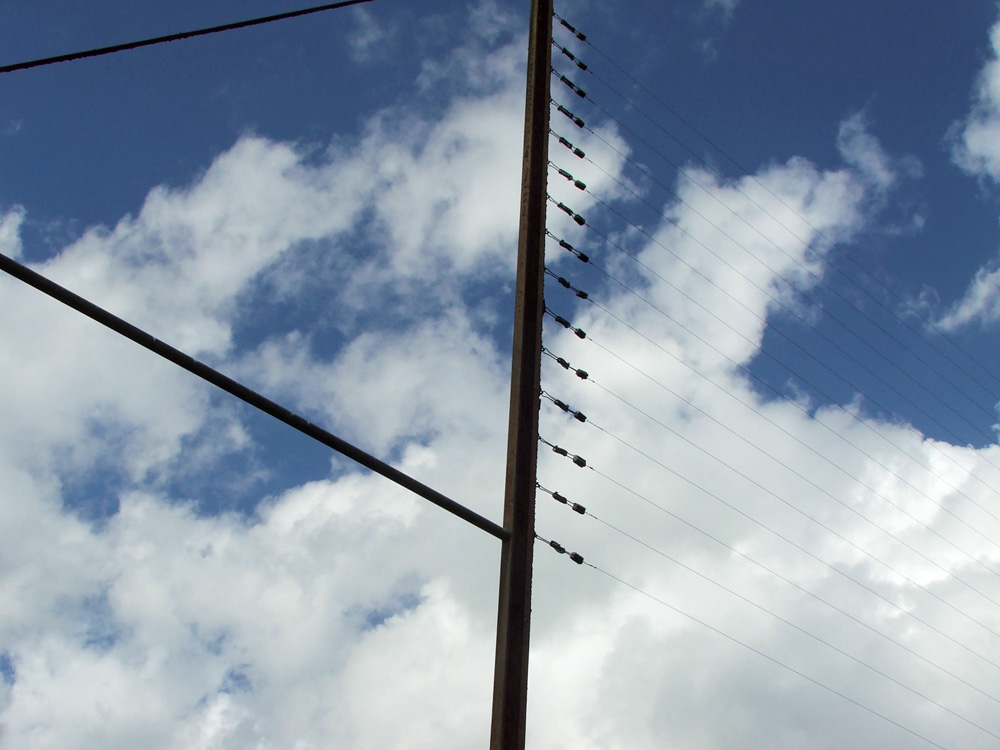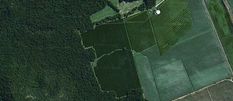Lethal crop protection is not effective
The effectiveness of netting
|
If flying-foxes cause significant losses in an orchard, it makes economic sense to net. Growers who net their crop commonly recoup their costs within a very few years due to fruit saved from flying-foxes and birds. According to the Queensland Government’s Lychee Information Kit, netting may be cost-effective even if only small crop savings are achieved.[2]
The Queensland government provides concessional loans for netting through the Queensland Rural Adjustment Authority.[3] Netting can be done in stages, using profit earned from saved fruit to fund subsequent stages. If crop losses are generally low, and it is not cost-effective to net, there are other non-lethal options such as noise and light deterrents that may work to minimise incursions. Some growers find them effective. But flying-foxes can become habituated to deterrents, limiting their effectiveness. Many fruit growers oppose lethal methods of crop protection, and would prefer that their industry promotes a clean and green image. They recognise the increasingly strong public expectation that food will be produced without cruelty to animals. |
“We do not agree with the shooting of native birds and bats. It may seem like an easy way out but it does little to improve profitability. Nets have saved our crops and therefore our profits 100 per cent.”
John Gough, stonefruit grower [4] “Orchard netting provides a physical barrier to exclude flying foxes and protect crops under all conditions. While sound and light systems can be used to deter animals from feeding in an orchard, these systems can be ineffective in some situations (e.g. when animals are starving).” Queensland Government [5]
|
Why killing is ineffective
Shooting and electrocution were the two lethal methods previously approved for crop potection against flying-foxes in Queensland. See here for more information about electric grids.
Even when there were no limits to the numbers of flying-foxes that could be killed, orchardists frequently claimed large fruit losses. Most fruit damage occurs when native foods for flying-foxes are in short supply, and killing does not stop damage in orchards under high flying-fox pressure. Farmers can’t patrol their entire orchard all night every night and kill all or even most bats that enter. A NSW survey found that farmers on average spent just 1.6 hours a night, 3 nights a week, guarding their orchards.[6] Even if they kill a few dozen early in the night, many more flying-foxes can arrive to feed later in the night. Similarly, electric grids kill only a small proportion of flying-foxes that enter an orchard. The quota system in place for six years prior to Queensland’s ban on shooting allowed on average 0.5-1 flying-fox (of each species) to be killed every night in an orchard.[7] Although many growers complained that the quota system did not allow them to protect their crops, some now claim that killing a small number of flying-foxes is effective because it allows them to kill so-called scout bats. Do 'scout' bats exist? Some growers contend there are certain flying-foxes whose role it is to search out food sources and then lead other bats to it (like honeybees). They claim that if they shoot these ‘scouts’ they can avoid damage because other flying-foxes won’t find their orchard.
But there is no scientific evidence for bat scouts. While flying-foxes are highly social and undoubtedly learn from each other, the scout idea is inconsistent with what is known about the capacity of flying-foxes to find food.[8] As a very concentrated source of food and an obvious feature in the landscape (from a flying bat view), orchards are easy to find – far easier than scattered fruiting or flowering trees in a forest. Flying-foxes have an excellent memory for places, allowing them to return to the same branch in the same tree in a camp after months of being away, which would allow them to return to orchards they had previously seen or visited. They don’t need a ‘scout’ to find them. More than 90% of surveyed NSW farmers reported that shooting early arriving flying-foxes was not effective at deterring others and that flying-foxes would return to an orchard after initially being scared off with gunshots. [9]
Leave ineffective cruel crop protection in the past
Killing for crop protection in Australia has a long history. In 1929, biologist Francis Ratcliffe was brought from England to investigate the ‘flying-fox problem’. He noted in his report after a two-year investigation that the object of most orchardists suffering damage was for the most part “to kill as many flying-foxes as possible”, and he documented the variety of ways by which destruction was attempted:
However, Ratcliffe concluded that the “assumption that the flying-fox is a menace to the commercial fruit industry of Australia is quite definitely false, and cannot be cited as a valid reason for the expenditure of public money on its control.” [10] |
What farmers with netting say
Netting costs & returns
The capital cost of netting an orchard can range from $17 000 per hectare up to $72 000 per hectare.
The financial returns from orchard netting include:
Queensland Government (2008) ‘To Net or Not to Net’ |
Downloads / Links |
|
References
[1] Department of Primary Industries & Fisheries (2005) Nets help save lychee industry from flying fox and bird attacks.Media Statement, 16 February 2005. [2] Menzel C, Kernot I, Chapman L, Rigden P. (2002) Lychee Information Kit. Department of Primary Industries, Queensland Government. [3] See http://www.qraa.qld.gov.au/. [4] See weblink to this PDF document [5] Rigden P. (2008) To Net or Not to Net. Queensland Government. [6] Dang H, Jarvis M, Fleming P, Malcolm P, Brook J and McClelland K (2009) Grey-headed Flying-foxes (Pteropus poliocephalus) in Orchards: Damage Estimates, Contributing Factors and Mitigation. Final Report to Hawkesbury Nepean Catchment Management Authority. NSW Department of Primary Industries, Orange and NSW Department of Environment and Climate Change. |
[7]Under the quota, damage mitigation permits could be issued to kill up to 15 Spectacled flying-foxes, 20 Grey-headed flying-foxes and 30 Black flying-foxes per month per orchard. [8] See "Scout Bats Are Myth" for more information & references. [9] Dang et al. See footnote [vi] [10] Ratcliffe F. (1931) “The Flying Fox (Pteropus) in Australia: Report of cooperative work conducted on behalf of the Council for Scientific Research, the New South Wales Department of Agriculture, and the Queensland Home Secretary’s Department”. Council for Scientific and Industrial Research Bulletin No. 53. |



